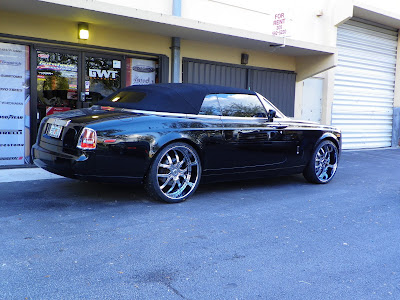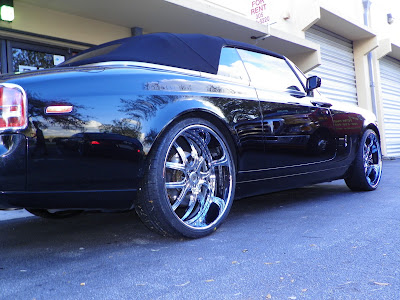2011 Toyota Tundra with NEW Fuel Mojave 20x9 5x150 Matte Black Wheels and 305/55R20 Nitto Terra Grappler All Terrain Tires
Toyota Tundra Review - What the Auto Press Says
The 2011 Toyota Tundra ranks 5 out of 8
Full Size Pickup Trucks. This ranking is based on our analysis of 66 published reviews and test drives of the Toyota Tundra, and our analysis of reliability and safety data.
The 2011 Toyota Tundra is a great all-around truck, but it’s easily trumped when it comes to looks, performance, fuel economy and standard features.
Most reviewers say the 2011 Toyota Tundra is practical and meets expectations. It has a large bed, multiple cab options that increase seating capacity and powerful engines.
The Tundra is a sensible truck, but it definitely isn’t perfect. One of the biggest complaints is that the Tundra tends to understeer and isn't as sturdy as the
Dodge Ram and
Ford F-150. The Tundra’s list of standard interior features is also sparse in comparison to its top competitors.
The consensus? Reviewers say that while the Tundra is outdone when it comes to handling, style and fuel economy, it is still an excellent all-around choice.
Edmunds says that, despite the Tundra’s faults, it “remains a well-built and thoroughly competent truck.”
Other Trucks to Consider
Many full size pickup trucks start between $2,000 and $3,000 less than the 2011 Toyota Tundra. Along with those savings, you get higher fuel economy ratings, better performance and more aggressive exterior styling.
If you’re after better fuel economy ratings, go for the
Chevrolet Silverado 1500 and the
GMC Sierra 1500, both of which get 15/20 mpg city/highway on the two-wheel drive models.
The
Dodge Ram offers more aggressive exterior styling and better performance, all for $20,610, almost $3,000 less than the Toyota Tundra. Fuel economy, however, isn’t best in class. The two-wheel drive Ram only gets 14/20 mpg city/highway.
To save money, go for a
2010 Tundra. It looks identical to the 2011 model, but it lacks a few standard safety features. Check our
Toyota Deals page for the best offers on 2010 models.
Details: Toyota Tundra
Toyota has given the Tundra a few updates for the 2011 model year. The 4.0 liter V6 engine gets dual variable timing, which increases fuel economy and power. Toyota also added more standard safety features: brake override technology and trailer-sway control. The Tundra is available in Regular, Double and CrewMax models.
- "Contradicting a trend that's gained momentum in the past decade, Toyota has reduced the maximum trailer-towing rating of the Tundra half-ton for 2011, in one case up to 1,100 pounds." -- Cars.com
- "Those who enjoyed the more nimble, economical Toyota pickups of the past may find the 2011 Toyota Tundra far too large. The Tundra's size means it can be challenging to maneuver in tight situations and, understandably, it is not particularly fuel-efficient, and there is no diesel engine option." -- Kelley Blue Book
- "Tundra trails GM and Ford for handling, interior materials, and overall refinement. It bests them for power and passenger accommodations, however. Give it a look." -- Consumer Guide
While the 2011 Toyota Tundra doesn’t have the most precise steering among
full size trucks,
Edmunds says, "It proved to be a capable workhorse that tackled all our towing, hauling and commuting needs without breaking a sweat."
Read More
Many reviewers say the 2011 Toyota Tundra doesn’t stand out in a class of more aggressive pickup trucks. "Toyota made sure this Tundra wouldn't have sand kicked in its face by designing a big, brawny pickup that looks like it could bully any truck on the market, at least from the front,” says
Cars.com. “From the side, the Tundra is rather conventional. A deck-rail adjustable tie-down system is available for all cargo beds."
Read More
The 2011 Toyota Tundra’s interior isn’t luxurious, and while some reviewers wish it were better, others say that it doesn’t need to be. As
Edmunds says, "Although the cabin evinced a few ergonomic missteps, it was generally durable, spacious and comfy."
Read More
The 2011 Toyota Tundra earns good crash test scores from the federal government and the
insurance industry for highway safety. This year, the Tundra gets two new standard safety features: Trailer-sway Control and brake override technology.
Read More
The 2011 Toyota Tundra reliability score shown is the Predicted Reliability rating provided by
J.D. Power and Associates. This score is based on trending the past three years of historical initial quality and dependability data from J.D. Power's automotive studies, specifically the Vehicle Dependability Study (VDS) and the Initial Quality Study (IQS). The 2011 Toyota Tundra has a basic
warranty that lasts for 36-months or 36,000-miles, whichever comes first.
Read More
Review Last Updated: 12/6/10
original article:






































